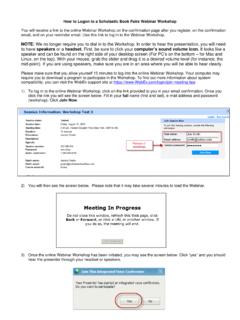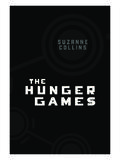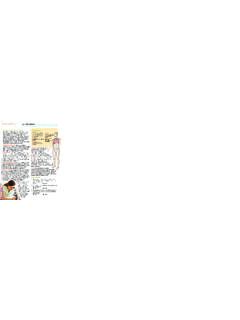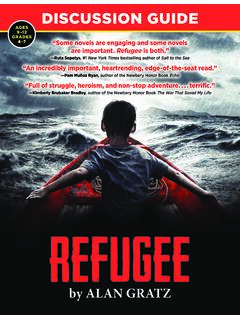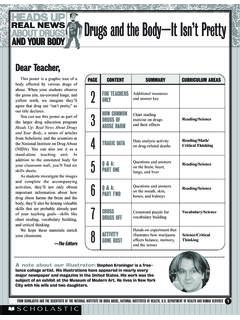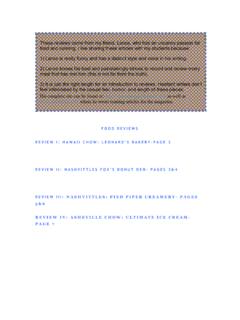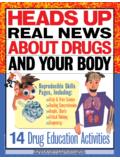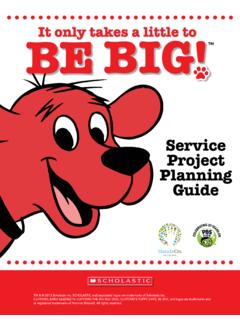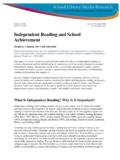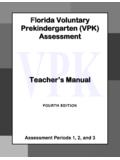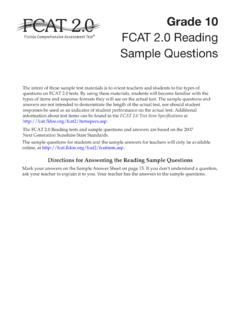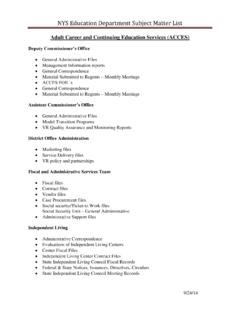Transcription of The Joy and Power of Reading - Scholastic
1 The Joy and Power of Reading A Summary of research and Expert Opinion The Joy and Power of Reading | A Summary of research and Expert Opinion 2 Table of Contents WHAT Reading MAKES 4 How to Read the Compendium .. 6 READERS .. 7 Early Readers .. 8 Adolescent Readers .. 13 Boys .. 18 English Language Learners .. 21 Diverse Learners .. 28 Reluctant Readers .. 32 Reading .. 39 Volume, Stamina, and Avid, Independent Reading .. 40 Comprehension .. 48 Background Knowledge .. 52 Vocabulary .. 56 Fluency .. 61 A GROWTH MINDSET .. 64 Growth Mindset and Reading 65 Engagement and Motivation .. 68 The Power of Reading Choice, Time, and Pleasure .. 71 New Literacies: Fan-Created Literary Content .. 77 TEXT .. 81 Access to Books .. 82 The Summer Slide .. 87 Classroom Libraries .. 91 Home Libraries .. 96 Genre and Text Types .. 99 Text Complexity .. 102 Nonfiction .. 105 Fiction .. 109 TEACH .. 113 Interactive Read-Aloud in the Classroom .. 114 Guided Reading .
2 119 Text Sets .. 123 Book Clubs .. 128 Reading and Writing Connections .. 133 HOME LITERACY .. 137 Oral Language The Foundation of Literacy .. 138 Speaking Two (or More) Languages Is Better Than One .. 143 The Joy and Power of Reading | A Summary of research and Expert Opinion 3 Home Reading Culture .. 146 The Read-Aloud & Reading Role Models Boost Learning .. 151 LIFETIME BENEFITS: THE CASE FOR INDEPENDENT Reading .. 155 Written by: Lois Bridges, Copyright 2015 by Scholastic Inc. The Joy and Power of Reading | A Summary of research and Expert Opinion 4 WHAT Reading MAKES POSSIBLE A childhood spent among books prepared me for a lifetime as a reader. Carol Jago, Past President of the National Council of Teachers of English Reading shapes lives; Reading even saves lives. Consider the stories of our greatest leaders across time, culture, and place. Almost all credit Reading as an essential force that catapulted them to success.
3 Thomas Edison, for example, had little formal schooling but was a relentless autodidact and profited mightily from Reading books in his father s home library, as well as the Detroit public library (Walsh, 2010). But Edison s story has its basis in science; indeed, explicit, systematic cognitive research gathered over many decades provides proof beyond dispute that Reading not only builds our brains, but also exercises our intelligence. Reading Makes Us Smart Anne Cunningham, renowned cognitive psychologist at the University of California, Berkeley, explains that Reading is a very rich, complex, and cognitive act (2003) that offers an immense opportunity to exercise our intelligence in ways we lose if we don t read. Hundreds of correlated studies demonstrate that the most successful students read the most, while those who struggle read the least. These correlated studies suggest that the more our students read, the better their comprehension, vocabulary and fluency and the more likely they are to build a robust knowledge of the world.
4 In short, Reading provides us with a cognitive workout that transcends not only our inherent abstract problem-solving abilities, but also our levels of education. Reading makes us smart. The Joy and Power of Reading | A Summary of research and Expert Opinion 5 Consider These Facts: Reading builds a cognitive processing infrastructure that then massively influences every aspect of our thinking particularly our crystallized intelligence a person's depth and breadth of general knowledge, vocabulary, and the ability to reason using words and numbers. (Stanovich, 2003). Children between the ages of 10 and 16 who read for pleasure make more progress not only in vocabulary and spelling but also in math than those who rarely read (Sullivan & Brown, 2013). Omnivorous Reading in childhood and adolescence correlates positively with ultimate adult success (Simonton, 1988). Multiple studies have shown that avid readers demonstrate both superior literacy development and wide-ranging knowledge across subjects (Allington, 2012; Hiebert & Reutzel, 2010; Sullivan & Brown, 2013).
5 Avid teen readers engage in deep intellectual work and psychological exploration through the books they choose to read themselves (Wilhelm & Smith, 2013). In addition to increasing intellectual prowess and expanding vocabulary, Reading also educates the imagination .. kindling the spirit of creativity in every human heart (Jago, 2010). And Reading fiction, in particular, expands the heart, making us compassionate (Oatley, 2014). The Reading Life We ve known for a long time that the best way to help our students succeed is to encourage them to read. To that end, we want our students to discover themselves as readers, to have a sense of their own unique, rich, and wondrous Reading lives. What books make their hearts race? What topics do they return to again and again? Dick Robinson, President and CEO of Scholastic , sums it up: You are what you read. Effective teachers work hard to help their students establish a Reading Identity that declares, This is who I am as a reader.
6 This research compendium aims to showcase decades of reliable Reading research to support you in your ultimate aim as an educator and parent: to help all children become proficient, avid readers who bring passion, skill, and a critical eye to every Reading encounter. In this way, our students might grow to exemplify and embrace the words of Myra Cohn Livingston, poet, musician, critic, educator and author: Books have more than changed my life they have made it possible. The Joy and Power of Reading | A Summary of research and Expert Opinion 6 How to Read the Compendium Start anywhere and read in any direction. Let your interests be your guide. The compendium is organized around six sections: Readers: We profile early, adolescent, and boy readers plus English Language Learners, students from diverse backgrounds, and reluctant readers. Reading : Avid, high-volume readers build an expansive capacity to comprehend what they read.
7 In addition, they develop robust vocabularies; deep knowledge of the world; and a proficient, fluid Reading style. A Growth Mindset: Avid, high-volume readers are highly engaged and motivated with stamina, self-efficacy, and a can-do spirit; they understand the joy and Power of Reading . Text: At school and in their homes, all children must have access to abundant text of all kinds (print and eBooks, short texts, magazines, and more); children need to develop a sense of genre, text structure, and purpose. Teaching: Students need daily time at school and at home to read and become enthusiastic, high-volume readers; they also need instructional support such as the interactive read-aloud ( Reading aloud plus conversation about the book), guided Reading , book clubs, and the benefit of writing about Reading . Family Literacy: Families with a rich Reading culture books and lots of talk about books are more likely to raise successful readers.
8 The compendium does not in any way represent a definitive treatment the field of Reading is vast, varied, and vital. When we investigate Reading , we explore cognition, linguistics, psychological influences, and social-cultural traditions. Instead, the compendium is meant to provide a brief introduction to the benefits of independent Reading , or free voluntary Reading , and suggest some of the pivotal research behind these benefits. It s a place for you to begin your own exploration. As our title suggests, we include both research and expert opinion so the references reflect a range of formats traditional research reports, as well as newspaper and professional journal articles. Additionally, whenever appropriate, we link to the Scholastic anthology: Open a World of Possible: Real Stories About the Joy and Power of Reading , a collection of essays authored by some of the leading literacy experts in the country (Bridges, 2014). Depending on the depth of your interest, you may want to use the references we cite as the starting point for a deeper investigation.
9 Note, some of the links are live, enabling you to read the original research online or download a print copy. The Joy and Power of Reading | A Summary of research and Expert Opinion 7 READERS Many of the texts I read as a child have been like roadmap markers, showing me a range of life options, suggesting only as a reader but also as a human being. Dr. Alfred Tatum, Dean of Curriculum & Instruction, University of Illinois at Chicago Early Adolescent Boys Diverse English Language Learners Reluctant The Joy and Power of Reading | A Summary of research and Expert Opinion 8 Early Readers Children exposed to lots of books during their early childhood will have an easier time learning to read than those who are not. Dr. Henry Bernstein, Harvard Medical School Key Findings Learning to read represents the weaving together of multiple skills, understandings, and orientations, many of which have their developmental origins in infancy and toddlerhood (Snow & Juel, 2005; Pinnell & Fountas, 2011).
10 The American Academy of Pediatricians (AAP) recommends that pediatricians encourage parents to read aloud daily, beginning as early as six months of age (2014). Dr. Pamela High, lead author of the APP policy, explains the aim: .. those 15-20 minutes spent Reading with a child can be the best part of the day. It s a joyful way to build child-parent relationships and set a child on the pathway to developing early literacy skills. Children who are routinely read to day in and day out and immersed in rich talk about books and the various activities in which they are engaged thrive (AAP, 2014; Cunningham, 2013; Needlman, 2006; 2014; Bernstein, 2010; Senechal & LeFevere,, 2002). Children with less exposure to books and talk may face learning challenges in school and beyond (AAP, 2014; Dickinson, McCabe, & Essex, 2006; Neuman & Celano, 2012). Literacy development is less about a limited critical period and more about windows of opportunity that extend across early childhood, culminating perhaps around the age of 10 (Dickinson & Neuman, 2006).

